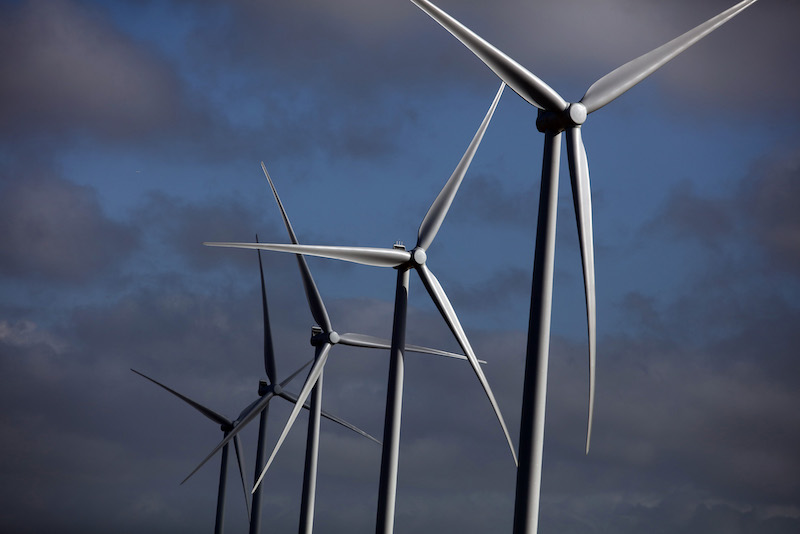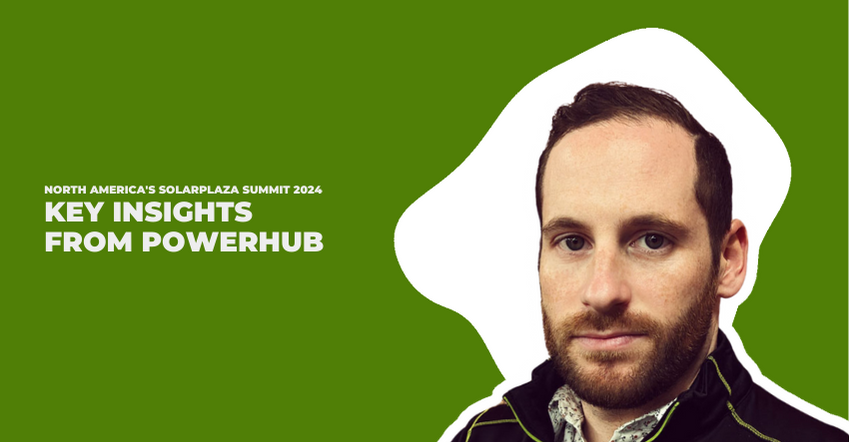So much of the work being done (or not done) on renewable energy projects is impacted by state- or province-wide policies and trends. This can be pretty undesirable (have you seen what’s going on in Ontario lately?) or in the case of green states like California, pretty encouraging.
Asset managers, developers, and any other renewable energy stakeholders need to keep a close eye on the atmosphere of existing markets and the stirrings of potentially emerging markets. Naturally, your friendly neighborhood asset management software team is here to help.
We wanted to find out more about the general outlook of the U.S. solar landscape, as well as any notable developments in solar-friendly U.S. states. So we spoke to one of the most knowledgeable experts in the industry, Sean Gallagher, Vice President of State Affairs at the Solar Energy Industries Association (SEIA).
How would you describe the current state of the big U.S. solar projects? Would you say developers are still building projects, or has it kind of slowed down or plateaued?
“It’s a bit of a mix. We have seen some impacts of the tariffs that the [Trump] administration placed on imported solar components earlier this year, so the industry has not been growing as fast as it would have otherwise.
But it’s actually stayed pretty strong, and perhaps stronger than we might have expected—partly because we saw some cost declines in [solar] components that happened around the same time as the tariffs were imposed, which sort of mitigated the cost impact of those tariffs.”
Would you say this is true across California, Texas, and the Carolinas?
“Every market has sort of a baseline, but what’s going on in any individual state matters a lot as well. For example, in California, we’ve seen the residential market doing pretty well, and the utility-scale market also continuing to do relatively well…but there’s a lot of concern about what’s going to come next in the utility-scale market because utilities have not been procuring any renewable power in the last couple of years.
There’s a bit of a question mark as to who is going to be responsible to procure for customers going forward, to meet the renewable portfolio standard (RPS)—is it going to be the utilities or is it going to be the Community Choice Aggregators, which are growing rapidly?
So at the moment, because there’s some uncertainty as to who will serve the customers, there’s also been a stall in the procurement of renewables and that’s probably the thing that we’re most concerned about in California—it’s getting that market started again so that the jobs and employment can continue.”
“Utilities have not been procuring any renewable power in the last couple of years.”
Do you know why that stall in solar procurement in California exists?
“There is this new category of load-serving entities known as Community Choice Aggregation (CCA), where cities and counties can organize to provide power to their residents. If and when they do, they become the power supplier to those residents. Those sorts of organizations are growing very rapidly in California.
For example, there is a proposed CCA in San Diego that, if and when it starts, will have a large number of customers in San Diego County. That means that the local utility, San Diego Gas & Electric, will have fewer customers than it has now.
In California, where we have a 50% RPS and that increases to 60% by 2030, if you have fewer customers then you don’t have to procure as much renewable energy to meet that percentage requirement.
So the utility doesn’t want to buy renewable power right now because it may lose customers to this new entity, and these new entities have not yet begun procuring power because many of them are still in the formation stages. We’re waiting for that to shake out.”
Is that stall impacting other states at all?
“The other markets you asked about, particularly Texas and the Carolinas, have really different dynamics going on. In both of those markets, the total number of megawatts being installed is driven primarily by utility-scale deployment.
In North Carolina, there is a transition occurring now from a standard offer contract regime into a competitive solicitation regime, and we expect to see the results of the first solicitation soon. But there’s every indication that North Carolina will continue to be a strong solar market, and we think that South Carolina is going to follow along as well.
We’ve seen projections by the Texas grid operator, ERCOT, that much of the electric power generation that’s developed in Texas over the next 10 years will be solar. And so far in Texas, most of the utility-scale solar is being driven by municipal utilities, like the city of Austin and the city of San Antonio.”
Are there other U.S. states that are emerging in the solar market?
“The two that have really jumped up in the last year or so are Illinois and Michigan. Illinois enacted a fix to their renewable portfolio standard at the end of 2016—that’s being implemented now. They’re looking for about 3,000 megawatts of solar in the next 10 years or so.
That’s being more or less equally divided between distributed generation and utility-scale solar. There’s a solicitation going out to the market, I believe this month, where they’ll be soliciting about 1,200 megawatts of solar to be built in the next 3-4 years.
A really interesting story coming out of Michigan is the utility that serves most of the lower part of Michigan, outside of Detroit, is called Consumers Energy. Consumers filed their Integrated Resource Plan, and in that plan, they proposed to shut down some of their existing coal plants early, and replace that capacity with a combination of solar, wind, and demand-side resources.
They went so far as to say that they didn’t expect to have to build any more fossil-fuel-fired electric generation at any time in the future. You’ve got a big utility in the northern part of the U.S. that says they can meet all their needs going forward with a combination of renewables, and storage and demand-side resources, and a ton of that will be solar. They’re projecting about 6 gigawatts of solar in the next 10 years or so.”
“The two that have really jumped up in the last year or so are Illinois and Michigan.”
In your opinion, what are the biggest challenges facing solar operators and developers in the U.S. right now?
“It varies to some extent from market to market. I think that in some of the leading markets, like California or Hawaii, the challenges include storage integration as you get to higher penetrations of solar.
We are going to see storage become more important, and that’s why you’ve seen solar companies large and small, and companies in the utility-scale market and the rooftop market, become interested in adding storage to their offerings. You’ll see that happening first in the larger markets and then spreading as the cost of storage continues to decline.
And then I think there’s still concern among some utilities about rooftop solar, in particular. You do still see utilities, like Westar [Energy] in Kansas proposing last week mandatory residential demand charges on solar customers and adopting policies that will slow down the adoption of solar by their customers.
We think that’s misguided in the long run—customers want solar. Eventually the utilities will have to find ways to give their customers what they want, and we want to work with utilities to make it a win-win proposition.
Fundamentally, it comes down to the worry that utilities need to be compensated. Utilities earn revenues and earn returns. If customers are building their own resources, utilities may have fewer investment to make on their own, and that will lower their profits over time.
We have to work with utilities to keep them whole, and to keep the grid operating well, and we think there’s a way to do that.”




